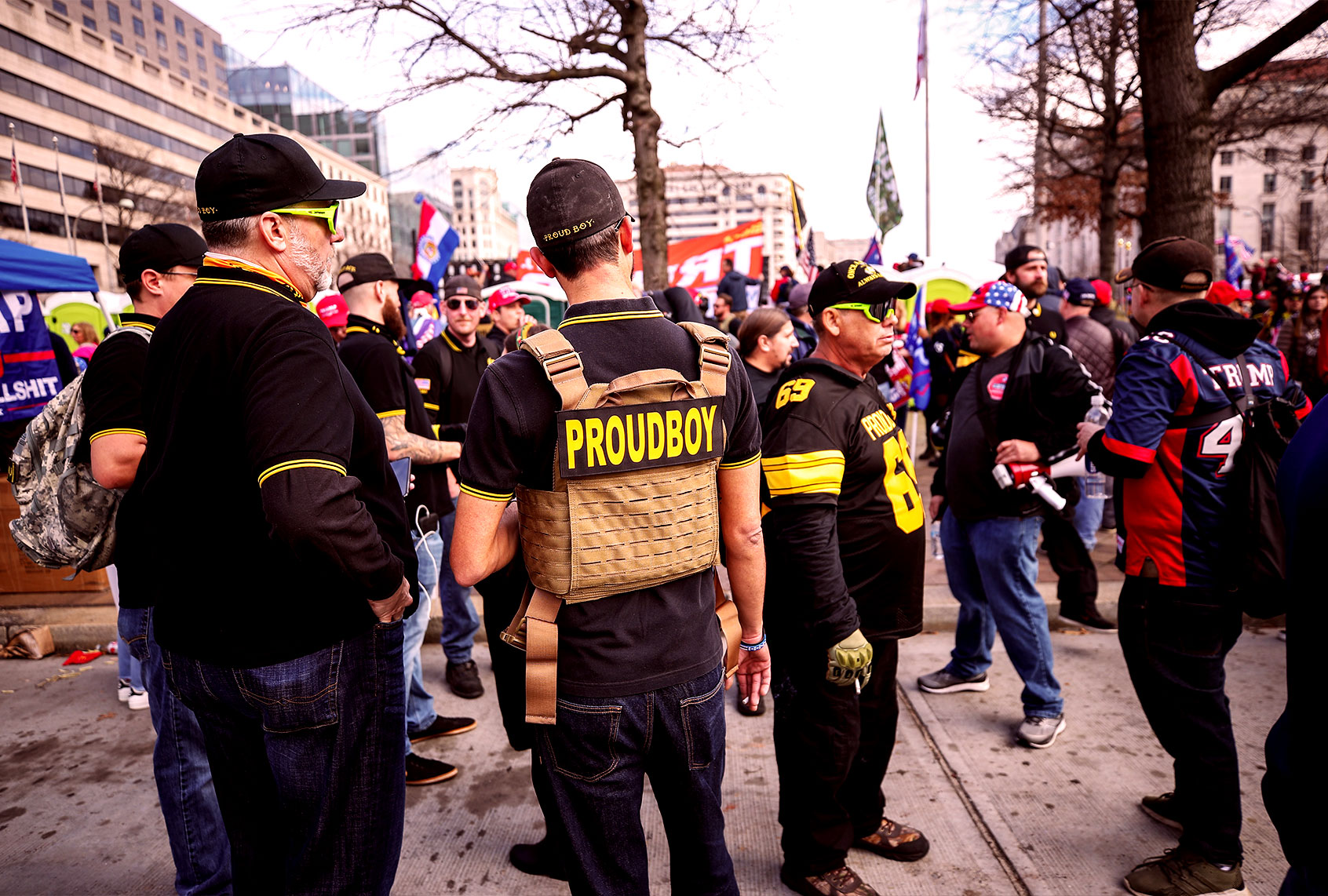When former president Donald Trump told the Proud Boys to “stand back and stand by” during a debate last fall, it thrust the relatively unknown extremist group into the public consciousness and fueled a “massive spike” in members’ activity.
“In the aftermath of that, suddenly everyone was talking about who the Proud Boys were and people were submitting applications to join the group,” the Southern Poverty Law Center senior research analyst Cassie Miller told NPR for a story published Wednesday.
Hampton Stall, senior researcher with the Armed Conflict Location Event Data Project (ACLED), added: “The election period was a massive spike of Proud Boys activity in the street that honestly started right after that debate.”
The ACLED found that between October and January, the Proud Boys “became visible to a degree previously unseen,” appearing at more than 40 protests, demonstrations and riots. Many were Stop the Steal rallies that culminated in the Capitol insurrection — and even Jan. 6-related conspiracy charges against 15 Proud Boys members have not resulted in a significant setback for the burgeoning organization.
Want a daily wrap-up of all the news and commentary Salon has to offer? Subscribe to our morning newsletter, Crash Course.
“They’re simply switching up their organizational style,” Miller told NPR. “Now they are organizing more at a local level, they’re hosting local rallies, or they’re joining into other rallies around political flashpoints like critical race theory or anti-masking. … What they want to do is normalize their brand of politics, which is one that is authoritarian, that wants to push the creation of a more hierarchical society where men, and white men in particular, retain the most power.”
The Proud Boys’ new strategy has put them “firmly in the constellation of far-right causes that coalesced on America’s streets over the summer.” In August, more than half of events where Proud Boys were present turned violent, and the group is now pursuing “a deliberate strategy to forge alliances with disparate elements on the right.”
“Trump’s welcoming of the Proud Boys into his fold on a debate stage one year ago may have given them the legitimacy they sought,” NPR reports. “But ultimately, Miller and Stall said the profound shift of America’s political right suggests that the group has found firm footing among a more mainstream audience even with Trump out of office, and it won’t be disappearing anytime soon.”


